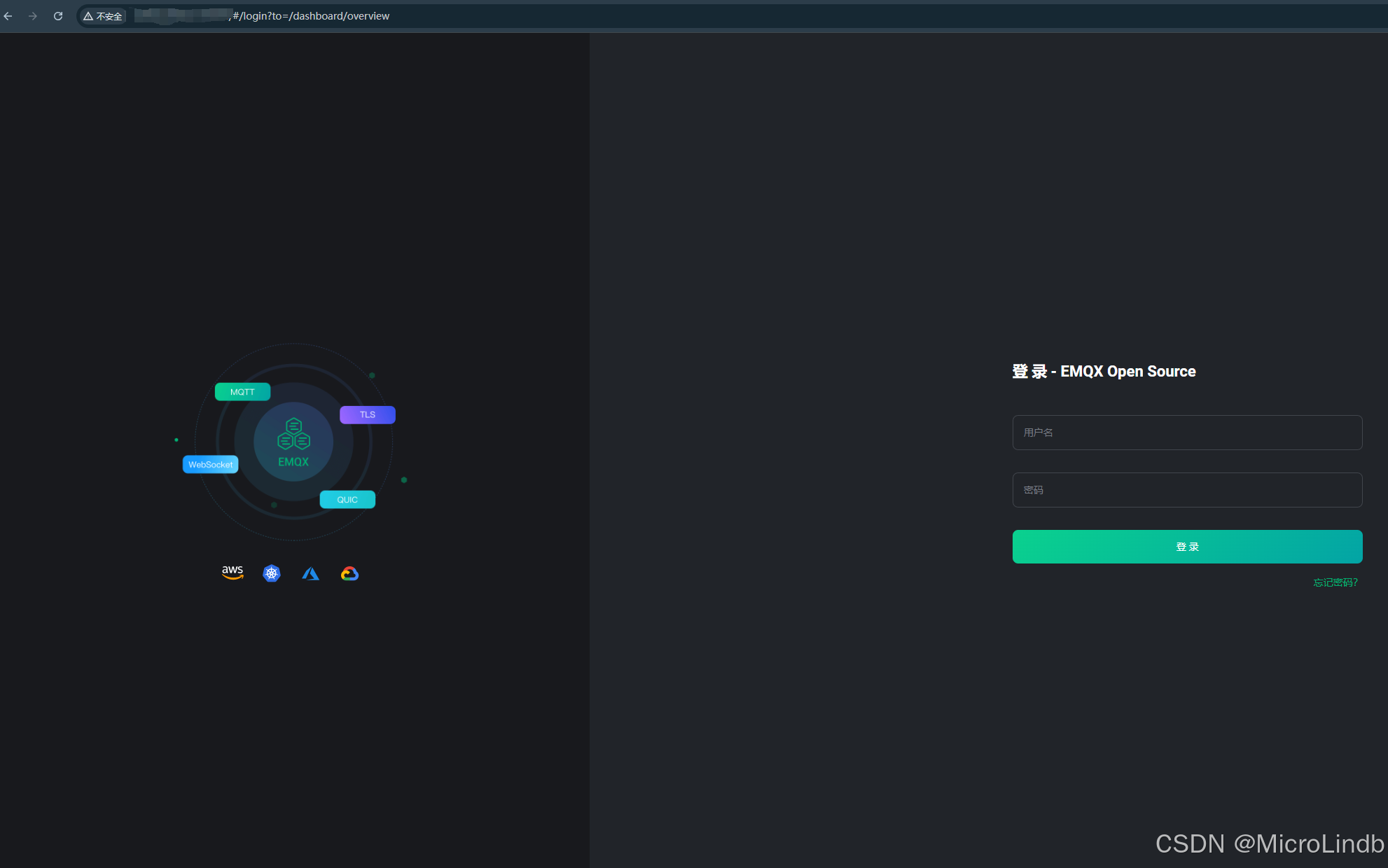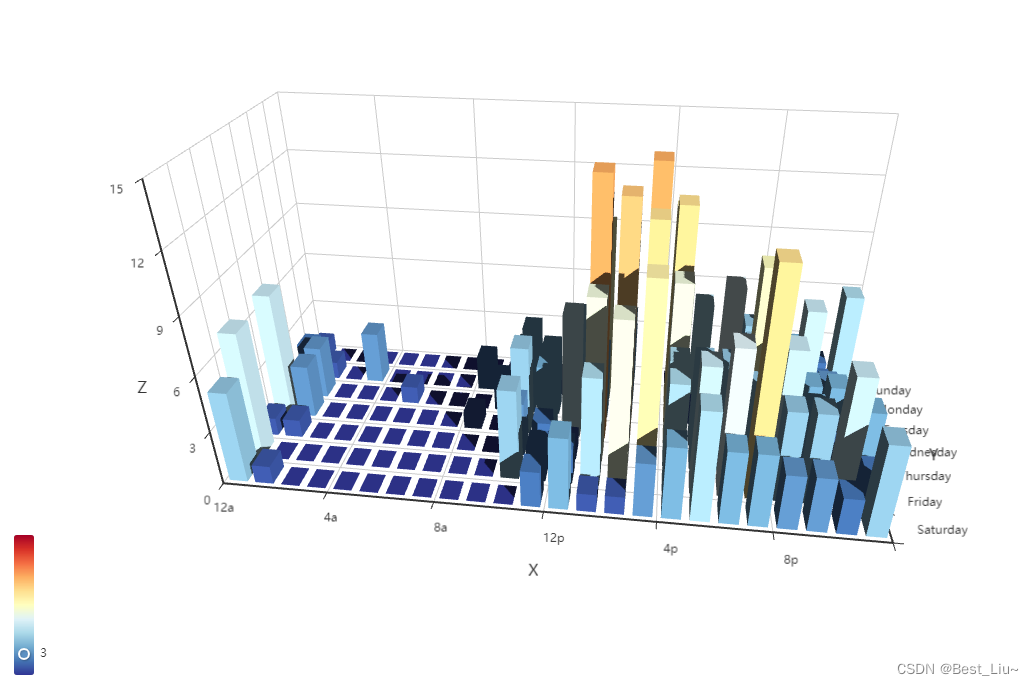存储机制(Storage Mechanisms)
每种支持的读取用户名和密码的机制都可以使用任何支持的存储机制:
- Simple Storage with In-Memory Authentication
- Relational Databases with JDBC Authentication
- Custom data stores with UserDetailsService
- LDAP storage with LDAP Authentication
In-Memory Authentication
Spring Security 的 InMemoryUserDetailsManager实现了 UserDetailsService,以支持存储在内存中的基于用户名/密码的身份验证。InmemyUserDetailsManager 通过实现 UserDetailsManager 接口提供对 UserDetails 的管理。当 SpringSecurity 配置为接受用户名和密码进行身份验证时,将使用基于 UserDetails 的身份验证。
在下面的示例中,我们使用 Spring Boot CLI 对密码的密码值进行编码,并得到{bcrypt}$2a$10$GRLdNijSQMUvl/au9ofL.eDwmoohzzS7.rmNSJZ.0FxO/BTk76klW:
InMemoryUserDetailsManager Java Configuration
@Bean
public UserDetailsService users() {
UserDetails user = User.builder()
.username("user")
.password("{bcrypt}$2a$10$GRLdNijSQMUvl/au9ofL.eDwmoohzzS7.rmNSJZ.0FxO/BTk76klW")
.roles("USER")
.build();
UserDetails admin = User.builder()
.username("admin")
.password("{bcrypt}$2a$10$GRLdNijSQMUvl/au9ofL.eDwmoohzzS7.rmNSJZ.0FxO/BTk76klW")
.roles("USER", "ADMIN")
.build();
return new InMemoryUserDetailsManager(user, admin);
}
前面的示例以安全的格式存储密码,但在初始体验方面还有很多不足之处。
在下面的示例中,我们使用 User.withDefaultPasswordEncoder 来确保存储在内存中的密码受到保护。但是,它不能通过反编译源代码来防止获取密码。因此,User.withDefaultPasswordEncoder 只能用于“入门”,而不能用于生产。
InMemoryUserDetailsManager with User.withDefaultPasswordEncoder
@Bean
public UserDetailsService users() {
// The builder will ensure the passwords are encoded before saving in memory
UserBuilder users = User.withDefaultPasswordEncoder();
UserDetails user = users
.username("user")
.password("password")
.roles("USER")
.build();
UserDetails admin = users
.username("admin")
.password("password")
.roles("USER", "ADMIN")
.build();
return new InMemoryUserDetailsManager(user, admin);
}
在基于 XML 的配置中使用 User.withDefaultPasswordEncoder 没有简单的方法。对于演示或刚开始,您可以选择以{ noop }作为密码的前缀来表示不应该使用编码:
<user-service>
<user name="user"
password="{noop}password"
authorities="ROLE_USER" />
<user name="admin"
password="{noop}password"
authorities="ROLE_USER,ROLE_ADMIN" />
</user-service>
JDBC Authentication
Spring Security 的 JdbcDaImpl 实现了 UserDetailsService,以支持使用 JDBC 检索的基于用户名和密码的身份验证。JdbcUserDetailsManager 扩展了 JdbcDaImpl,通过 UserDetailsManager 接口提供对 UserDetails 的管理。Spring Security 将基于 UserDetails 的身份验证配置为接受用户名/密码进行身份验证时,将使用该身份验证。
在下面的章节中,我们将讨论:
- Spring Security JDBC Authentication使用的默认架构
- 设置数据源
- JdbcUserDetailsManager Bean
默认架构(Default Schema)
SpringSecurity 为基于 JDBC 的身份验证提供默认查询。本节提供与默认查询一起使用的相应默认架构。您需要调整模式,使其与所使用的查询和本地数据库的任何定制相匹配。
用户架构(User Schema)
JdbcDaImpl 需要表来加载用户的密码、帐户状态(启用或禁用)和权限(角色)列表。默认模式也公开为一个名为 org/springFramework/security/core/userDetails/jdbc/users.ddl 的类路径资源。
Default User Schema
create table users(
username varchar_ignorecase(50) not null primary key,
password varchar_ignorecase(500) not null,
enabled boolean not null
);
create table authorities (
username varchar_ignorecase(50) not null,
authority varchar_ignorecase(50) not null,
constraint fk_authorities_users foreign key(username) references users(username)
);
create unique index ix_auth_username on authorities (username,authority);
Oracle 是一种流行的数据库选择,但需要一种略有不同的模式:
Default User Schema for Oracle Databases
CREATE TABLE USERS (
USERNAME NVARCHAR2(128) PRIMARY KEY,
PASSWORD NVARCHAR2(128) NOT NULL,
ENABLED CHAR(1) CHECK (ENABLED IN ('Y','N') ) NOT NULL
);
CREATE TABLE AUTHORITIES (
USERNAME NVARCHAR2(128) NOT NULL,
AUTHORITY NVARCHAR2(128) NOT NULL
);
ALTER TABLE AUTHORITIES ADD CONSTRAINT AUTHORITIES_UNIQUE UNIQUE (USERNAME, AUTHORITY);
ALTER TABLE AUTHORITIES ADD CONSTRAINT AUTHORITIES_FK1 FOREIGN KEY (USERNAME) REFERENCES USERS (USERNAME) ENABLE;
组结构(Group Schema)
如果应用程序使用组,则需要提供组架构:
Default Group Schema
create table groups (
id bigint generated by default as identity(start with 0) primary key,
group_name varchar_ignorecase(50) not null
);
create table group_authorities (
group_id bigint not null,
authority varchar(50) not null,
constraint fk_group_authorities_group foreign key(group_id) references groups(id)
);
create table group_members (
id bigint generated by default as identity(start with 0) primary key,
username varchar(50) not null,
group_id bigint not null,
constraint fk_group_members_group foreign key(group_id) references groups(id)
);
设置数据源(Setting up a DataSource)
在配置 JdbcUserDetailsManager 之前,必须创建一个 DataSource。在我们的示例中,我们设置了一个用默认用户架构初始化的嵌入式 DataSource。
@Bean
DataSource dataSource() {
return new EmbeddedDatabaseBuilder()
.setType(H2)
.addScript(JdbcDaoImpl.DEFAULT_USER_SCHEMA_DDL_LOCATION)
.build();
}
JdbcUserDetailsManager Bean
在这个示例中,我们使用 Spring Boot CLI 对密码的密码值进行编码,并获得{bcrypt}$2a$10$GRLdNijSQMUvl/au9ofL.eDwmoohzzS7.rmNSJZ.0FxO/BTk76klW 的编码密码。有关如何存储密码的详细信息,请参阅 PasswordEncoder 部分。
JdbcUserDetailsManager
@Bean
UserDetailsManager users(DataSource dataSource) {
UserDetails user = User.builder()
.username("user")
.password("{bcrypt}$2a$10$GRLdNijSQMUvl/au9ofL.eDwmoohzzS7.rmNSJZ.0FxO/BTk76klW")
.roles("USER")
.build();
UserDetails admin = User.builder()
.username("admin")
.password("{bcrypt}$2a$10$GRLdNijSQMUvl/au9ofL.eDwmoohzzS7.rmNSJZ.0FxO/BTk76klW")
.roles("USER", "ADMIN")
.build();
JdbcUserDetailsManager users = new JdbcUserDetailsManager(dataSource);
users.createUser(user);
users.createUser(admin);
return users;
}
UserDetails
UserDetails 由 UserDetailsService 返回。DauAuthenticationProvider 验证 UserDetails,然后返回一个 Authentication,其主体是由配置的 UserDetailsService 返回的 UserDetails。
UserDetailsService
DataAuthenticationProvider 使用 UserDetailsService 检索用户名、密码和其他属性,以便使用用户名和密码进行身份验证。Spring Security 提供了 UserDetailsService 的内存、 JDBC 和缓存实现。
可以通过将自定义 UserDetailsService 公开为 bean 来定义自定义身份验证。例如,下面的清单假设 CustomUserDetailsService 实现 UserDetailsService,从而自定义身份验证:
只有在没有填充 AuthenticationManagerBuilder 且没有定义 AuthenticationProviderBean 的情况下才会使用。
Custom UserDetailsService Bean
@Bean
CustomUserDetailsService customUserDetailsService() {
return new CustomUserDetailsService();
}
PasswordEncoder
SpringSecurity 的 servlet 支持包括通过集成 PasswordEncoder 来安全地存储密码。您可以通过公开 PasswordEncoderBean 来自定义 Spring Security 使用的 PasswordEncoder 实现。
DaoAuthenticationProvider
DauAuthenticationProvider 是一个 AuthenticationProvider 实现,它使用 UserDetailsService 和 PasswordEncoder 对用户名和密码进行身份验证。
本节研究 DauAuthenticationProvider 如何在 SpringSecurity 中工作。下图以“阅读用户名和密码”部分中的数字解释了 AuthenticationManager 的工作原理。
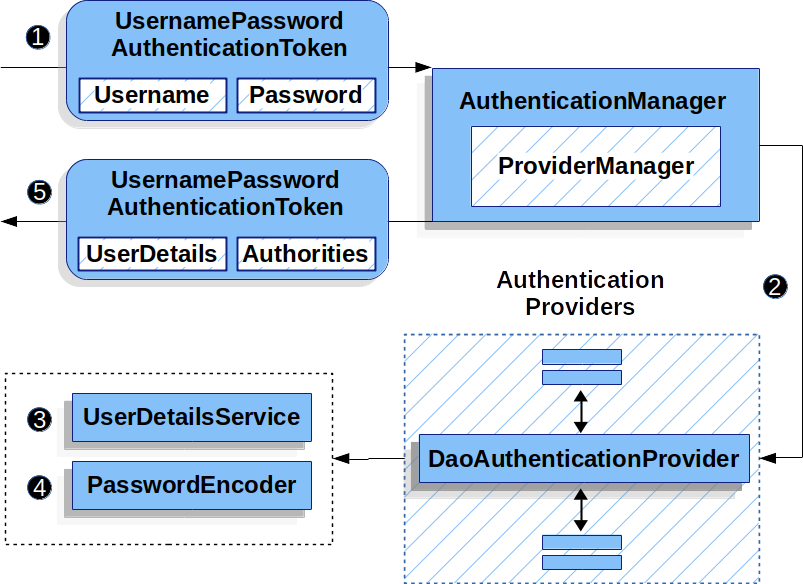
- Reading the Username & Password 部分中的身份验证筛选器将 UsernamePasswordAuthenticationToken 传递给 AuthenticationManager,后者由 ProviderManager 实现。
- ProviderManager 配置为使用类型为 DauAuthenticationProvider 的 AuthenticationProvider。
- DauAuthenticationProvider 从 UserDetailsService 查找 UserDetails。
- DauAuthenticationProvider 使用 PasswordEncoder 验证在上一步中返回的 UserDetails 上的密码。
- 身份验证成功后,返回的身份验证类型为 UsernamePasswordAuthenticationToken,其主体是由配置的 UserDetailsService 返回的 UserDetails。最终,身份验证筛选器将在 SecurityContextHolder 上设置返回的 UsernamePasswordAuthenticationToken。
LDAP Authentication
LDAP (轻型目录访问协议)经常被组织用作用户信息的中央存储库和身份验证服务。它还可用于存储应用程序用户的角色信息。
Spring Security 的基于 LDAP 的身份验证在配置为接受用户名/密码进行身份验证时使用。然而,尽管使用用户名和密码进行身份验证,它并不使用 UserDetailsService,因为在绑定身份验证中,LDAP 服务器不会返回密码,因此应用程序无法进行密码验证。
对于如何配置 LDAP 服务器,有许多不同的场景,因此 Spring Security 的 LDAP 提供程序是完全可配置的。它使用单独的策略接口进行身份验证和角色检索,并提供默认实现,可以将其配置为处理各种情况。
Required Dependencies
Spring Security LDAP Dependencies
<dependency>
<groupId>org.springframework.boot</groupId>
<artifactId>spring-boot-starter-data-ldap</artifactId>
</dependency>
<dependency>
<groupId>org.springframework.security</groupId>
<artifactId>spring-security-ldap</artifactId>
</dependency>
Prerequisites
在尝试将 LDAP 与 SpringSecurity 一起使用之前,您应该熟悉 LDAP。以下连结提供有关概念的简介,以及使用免费 LDAP 伺服器(OpenLDAP)建立目录的指引: www.zytrax.com/books/LDAP/。熟悉用于从 Java 访问 LDAP 的 JNDI API 也很有用。我们在 LDAP 提供商中不使用任何第三方 LDAP 库(Mozilla、 JLDAP 或其他) ,而是大量使用的是 Spring LDAP,所以如果您计划添加自己的定制,对该项目有一些了解可能会有用。
在使用 LDAP 身份验证时,应确保正确配置 LDAP 连接池。如果您不熟悉如何这样做,请参阅 JavaLDAP 文档。
设置嵌入式 LDAP 服务器(Setting up an Embedded LDAP Server)
您需要做的第一件事情是确保您有一个 LDAP 服务器来指向您的配置。
您需要做的第一件事情是确保您有一个 LDAP 服务器来指向您的配置。为了简单起见,最好从嵌入式 LDAP 服务器开始。Spring Security 支持使用以下两种方式:
- Embedded UnboundID Server
- Embedded ApacheDS Server
在下面的示例中,我们将 users.ldif 作为类路径资源公开,以使用两个用户(user 和 admin)初始化嵌入式 LDAP 服务器,这两个用户都有密码:
users.ldif
dn: ou=groups,dc=springframework,dc=org
objectclass: top
objectclass: organizationalUnit
ou: groups
dn: ou=people,dc=springframework,dc=org
objectclass: top
objectclass: organizationalUnit
ou: people
dn: uid=admin,ou=people,dc=springframework,dc=org
objectclass: top
objectclass: person
objectclass: organizationalPerson
objectclass: inetOrgPerson
cn: Rod Johnson
sn: Johnson
uid: admin
userPassword: password
dn: uid=user,ou=people,dc=springframework,dc=org
objectclass: top
objectclass: person
objectclass: organizationalPerson
objectclass: inetOrgPerson
cn: Dianne Emu
sn: Emu
uid: user
userPassword: password
dn: cn=user,ou=groups,dc=springframework,dc=org
objectclass: top
objectclass: groupOfNames
cn: user
member: uid=admin,ou=people,dc=springframework,dc=org
member: uid=user,ou=people,dc=springframework,dc=org
dn: cn=admin,ou=groups,dc=springframework,dc=org
objectclass: top
objectclass: groupOfNames
cn: admin
member: uid=admin,ou=people,dc=springframework,dc=org
Embedded UnboundID Server
如果希望使用 Unbound ID,请指定以下依赖项:
UnboundID Dependencies
<dependency>
<groupId>com.unboundid</groupId>
<artifactId>unboundid-ldapsdk</artifactId>
<version>6.0.11</version>
<scope>runtime</scope>
</dependency>
然后可以使用 EmbeddedLdapServerContextSourceFactoryBean 配置嵌入式 LDAP 服务器。这将指示 Spring Security 启动内存中的 LDAP 服务器:
Embedded LDAP Server Configuration
@Bean
public EmbeddedLdapServerContextSourceFactoryBean contextSourceFactoryBean() {
return EmbeddedLdapServerContextSourceFactoryBean.fromEmbeddedLdapServer();
}
或者,可以手动配置嵌入式 LDAP 服务器。如果选择这种方法,您将负责管理嵌入式 LDAP 服务器的生命周期。
Explicit Embedded LDAP Server Configuration
@Bean
UnboundIdContainer ldapContainer() {
return new UnboundIdContainer("dc=springframework,dc=org",
"classpath:users.ldif");
}
Embedded ApacheDS Server
Spring Security 使用 ApacheDS 1.x,不再进行维护。不幸的是,ApacheDS 2.x 只发布了里程碑版本,没有稳定的版本。一旦 ApacheDS 2.x 的稳定版本可用,我们将考虑更新。
如果您希望使用 Apache DS,请指定以下依赖项:
ApacheDS Dependencies
<dependency>
<groupId>org.apache.directory.server</groupId>
<artifactId>apacheds-core</artifactId>
<version>1.5.5</version>
<scope>runtime</scope>
</dependency>
<dependency>
<groupId>org.apache.directory.server</groupId>
<artifactId>apacheds-server-jndi</artifactId>
<version>1.5.5</version>
<scope>runtime</scope>
</dependency>
然后可以配置嵌入式 LDAP 服务器:
@Bean
ApacheDSContainer ldapContainer() {
return new ApacheDSContainer("dc=springframework,dc=org",
"classpath:users.ldif");
}
LDAP ContextSource
一旦有了指向配置的 LDAP 服务器,就需要将 Spring Security 配置为指向应该用于身份验证用户的 LDAP 服务器。为此,创建一个 LDAP ContextSource (相当于 JDBC DataSource)。如果已经配置了 EmbeddedLdapServerContextSourceFactoryBean,Spring Security 将创建指向嵌入式 LDAP 服务器的 LDAP ContextSource。
LDAP Context Source with Embedded LDAP Server
@Bean
public EmbeddedLdapServerContextSourceFactoryBean contextSourceFactoryBean() {
EmbeddedLdapServerContextSourceFactoryBean contextSourceFactoryBean =
EmbeddedLdapServerContextSourceFactoryBean.fromEmbeddedLdapServer();
contextSourceFactoryBean.setPort(0);
return contextSourceFactoryBean;
}
或者,可以显式配置 LDAP ContextSource 以连接到提供的 LDAP 服务器:
LDAP Context Source
ContextSource contextSource(UnboundIdContainer container) {
return new DefaultSpringSecurityContextSource("ldap://localhost:53389/dc=springframework,dc=org");
}
Authentication
Spring Security 的 LDAP 支持不使用 UserDetailsService,因为 LDAP 绑定身份验证不允许客户端读取密码,甚至不允许密码的散列版本。这意味着没有办法读取密码,然后由 SpringSecurity 进行身份验证。
因此,LDAP 支持是通过 LdapAuthenticator 接口实现的。LdapAuthenticator 接口还负责检索任何必需的用户属性。这是因为对属性的权限可能取决于所使用的身份验证类型。例如,如果绑定为用户,则可能需要使用用户自己的权限读取属性。
Spring Security 提供了两个 LdapAuthenticator 实现:
- Using Bind Authentication
- Using Password Authentication
Using Bind Authentication
绑定身份验证是使用 LDAP 对用户进行身份验证的最常用机制。在绑定身份验证中,用户的凭据(用户名和密码)被提交给 LDAP 服务器,LDAP 服务器对它们进行身份验证。使用绑定身份验证的优点是不需要向客户机公开用户的秘密(密码) ,这有助于保护它们不被泄露。
下面的示例演示绑定身份验证配置:
Bind Authentication
@Bean
AuthenticationManager authenticationManager(BaseLdapPathContextSource contextSource) {
LdapBindAuthenticationManagerFactory factory = new LdapBindAuthenticationManagerFactory(contextSource);
factory.setUserDnPatterns("uid={0},ou=people");
return factory.createAuthenticationManager();
}
前面的简单示例将通过在提供的模式中替换用户登录名并尝试将该用户与登录密码绑定来获取该用户的 DN。如果所有用户都存储在目录中的单个节点下,则可以这样做。如果希望配置 LDAP 搜索筛选器来定位用户,可以使用以下方法:
Bind Authentication with Search Filter
@Bean
AuthenticationManager authenticationManager(BaseLdapPathContextSource contextSource) {
LdapBindAuthenticationManagerFactory factory = new LdapBindAuthenticationManagerFactory(contextSource);
factory.setUserSearchFilter("(uid={0})");
factory.setUserSearchBase("ou=people");
return factory.createAuthenticationManager();
}
如果与前面显示的 ContextSource 定义一起使用,这将使用(uid = {0})作为过滤器在 DN ou = people,dc = springFramework,dc = org 下执行搜索。同样,用户登录名替代了筛选器名称中的参数,因此它搜索的条目的 uid 属性与用户名相等。如果未提供用户搜索基,则从根目录执行搜索。
Using Password Authentication
密码比较是将用户提供的密码与存储库中存储的密码进行比较。这可以通过检索 password 属性的值并在本地进行检查来完成,也可以通过执行 LDAP 的“比较”操作来完成,其中提供的密码被传递给服务器进行比较,并且永远不会检索到真正的密码值。如果密码使用随机的 salt 进行了正确的散列,则无法进行 LDAP 比较。
Minimal Password Compare Configuration
@Bean
AuthenticationManager authenticationManager(BaseLdapPathContextSource contextSource) {
LdapPasswordComparisonAuthenticationManagerFactory factory = new LdapPasswordComparisonAuthenticationManagerFactory(
contextSource, NoOpPasswordEncoder.getInstance());
factory.setUserDnPatterns("uid={0},ou=people");
return factory.createAuthenticationManager();
}
下面的示例显示了一个更高级的配置,其中包含一些自定义项:
Password Compare Configuration
@Bean
AuthenticationManager authenticationManager(BaseLdapPathContextSource contextSource) {
LdapPasswordComparisonAuthenticationManagerFactory factory = new LdapPasswordComparisonAuthenticationManagerFactory(
contextSource, new BCryptPasswordEncoder());
factory.setUserDnPatterns("uid={0},ou=people");
factory.setPasswordAttribute("pwd");
return factory.createAuthenticationManager();
}
- 将 password 属性指定为 pwd。
LdapAuthoritiesPopulator
SpringSecurity 的 LdapAuthoritiesPopator 用于确定为用户返回哪些权限。下面的示例显示如何配置 LdapAuthoritiesPopator:
LdapAuthoritiesPopulator Configuration
@Bean
LdapAuthoritiesPopulator authorities(BaseLdapPathContextSource contextSource) {
String groupSearchBase = "";
DefaultLdapAuthoritiesPopulator authorities =
new DefaultLdapAuthoritiesPopulator(contextSource, groupSearchBase);
authorities.setGroupSearchFilter("member={0}");
return authorities;
}
@Bean
AuthenticationManager authenticationManager(BaseLdapPathContextSource contextSource, LdapAuthoritiesPopulator authorities) {
LdapBindAuthenticationManagerFactory factory = new LdapBindAuthenticationManagerFactory(contextSource);
factory.setUserDnPatterns("uid={0},ou=people");
factory.setLdapAuthoritiesPopulator(authorities);
return factory.createAuthenticationManager();
}
Active Directory
ActiveDirectory 支持自己的非标准身份验证选项,正常的使用模式与标准的 LdapAuthenticationProvider 不太匹配。通常,身份验证是通过使用域用户名(以 user@domain 的形式)执行的,而不是使用 LDAP 专有名称。为了简化这一点,SpringSecurity 有一个身份验证提供程序,该程序是为典型的 ActiveDirectory 设置定制的。
配置 ActiveDirectoryLdapAuthenticationProvider 非常简单。您只需提供域名和提供服务器地址的 LDAP URL。
也可以通过 DNS 查找获得服务器的 IP 地址。目前还不支持,但希望在将来的版本中会支持。
下面的示例配置 ActiveDirectory:
Example Active Directory Configuration
@Bean
ActiveDirectoryLdapAuthenticationProvider authenticationProvider() {
return new ActiveDirectoryLdapAuthenticationProvider("example.com", "ldap://company.example.com/");
}




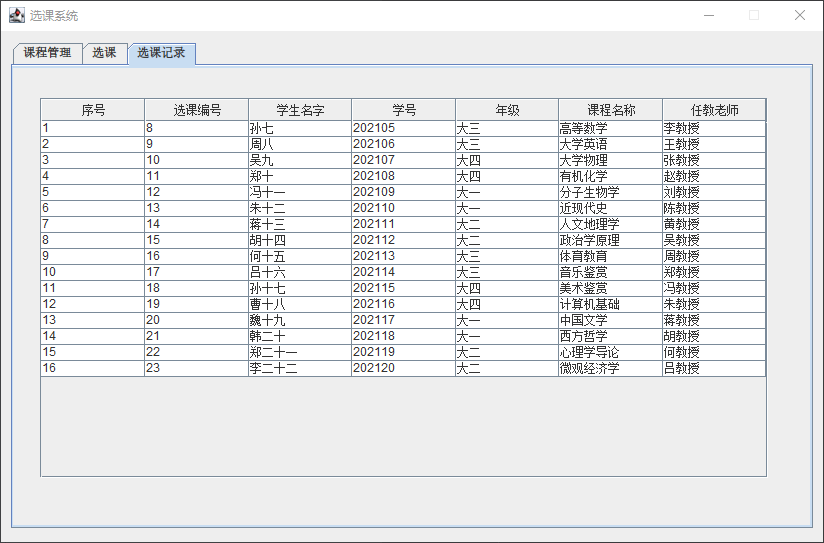



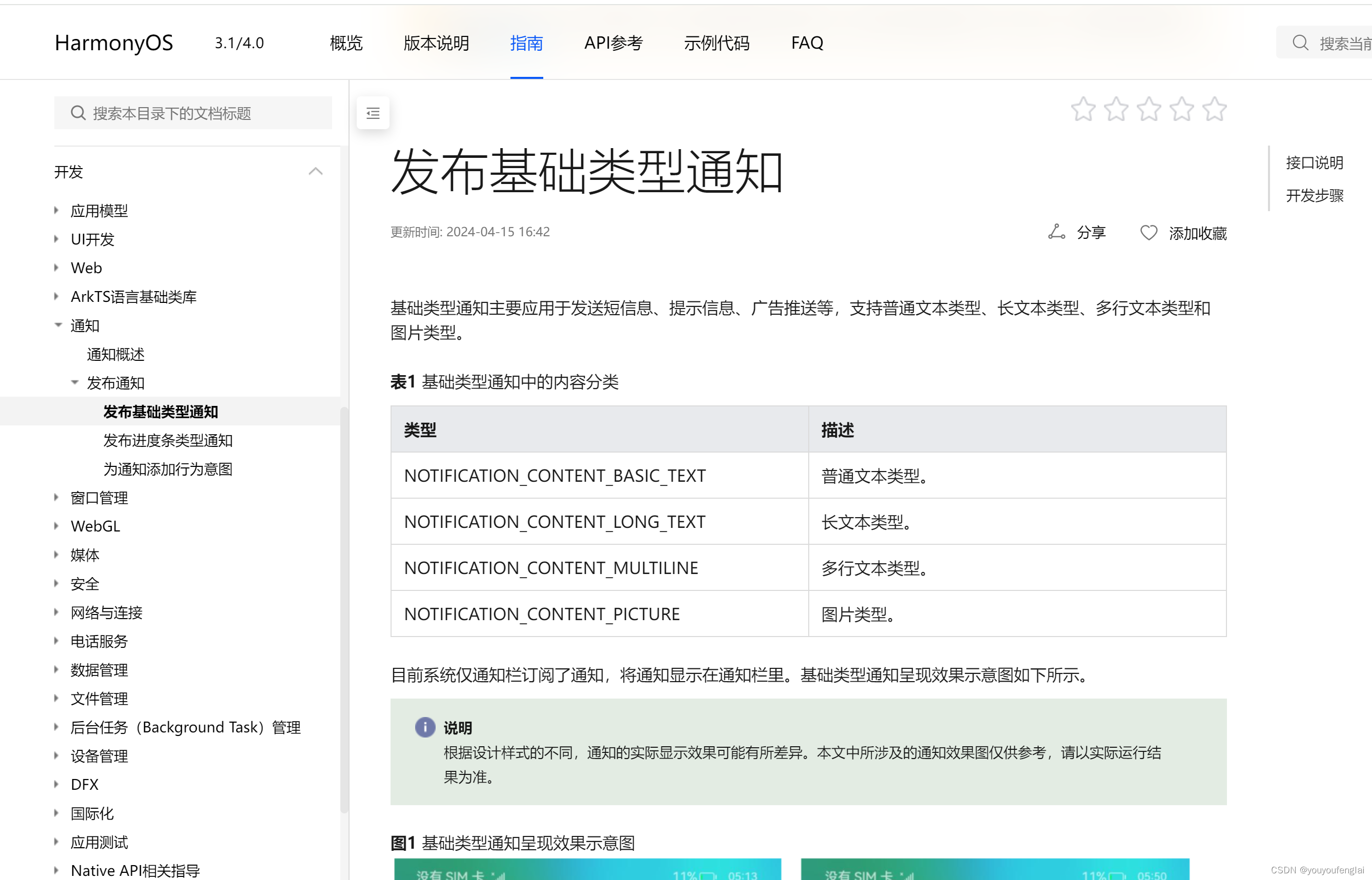
![[SAP ABAP] 版本管理](https://i-blog.csdnimg.cn/direct/74779e385fa347c5aa6c2de4eb045b9a.png)

